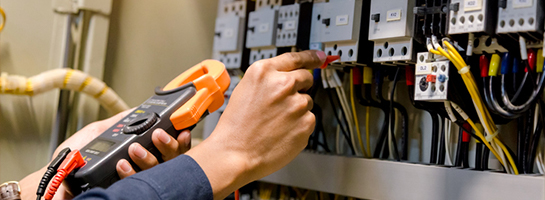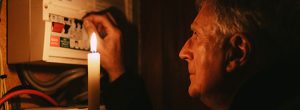Electricity powers nearly every aspect of modern life. It keeps homes warm, devices charged, and families connected, and the electrical systems that make all these conveniences possible are often overlooked—until something goes wrong. Skipped routine electrical inspections can seem harmless, but their risks are very severe. Such an issue stirs something connected to safety, financial stability, and even emotional well-being. Here’s why prioritizing regular electrical checks makes all the difference and what happens when they are ignored.
The Silent Menace Hidden Behind the Walls
Electrical systems are often placed discreetly behind the walls and ceilings. Since these workings usually do not come into view, it is forgotten that they exist. Nevertheless, the very reason why electrical wiring seems less visible to us makes it more dangerous. Without any inspections, small problems such as frayed cables or loose connections gradually become hazardous threats.
One of the leading causes of house fires is electrical, yet most of these fires start because faults have been overlooked. The issues could easily have been detected and perhaps even resolved early on as part of a routine inspection. Knowing that danger lurks and can’t necessarily be seen is the first part of the way to the safety and protection of loved ones and property.
Safety: The Strongest Reason to Act
Safety is one of the biggest risks of ignoring electrical inspections. Long-term wear and tear influence all electrical systems, even in relatively new homes. Corrosion, rodent damage, or outdated wiring create situations where electrical currents just don’t flow as intended.
Take the small spark produced by a faulty wiring point. That tiny spark might look tiny, but it becomes disastrous if it occurs near flammable materials. Ensuring an electrical system is in good shape isn’t just a matter of functionality; it’s about the protection of those who live or work in that space.
The Ripple Effect on Household Budgets
Besides safety, neglecting inspections can also drain your wallet. Small electrical problems that are left unaddressed often turn into pricey repairs. A loose wire, for example, can overheat, perhaps causing appliance damage or necessitating extensive rewiring. The cost of a regular examination is significantly less than the expense of correcting major damage.
Furthermore, inefficient electrical systems can inflate energy bills. Outdated or damaged wiring consumes more power, placing extra pressure on wallets. Catching these inefficiencies can lead to a noticeable difference in savings over time.
Emotional Impact Due to Avoidable Risks
This is because every family needs to be assured of its safety at home. However, an uninspected electrical system introduces a constant element of risk. Uncertainty when one does not know whether an unseen issue is brewing can prove to be stressful. It’s not only about accidents or financial strain; it’s being under the cloud of unease.
Regular checks alleviate this burden by ensuring that the home’s electrical system is safe and working just right. A well-functioning system lets everyone enjoy their time together rather than worry about what could go wrong.
The Cost of Neglect of Inspections
Regular maintenance would have ensured safety. Common sources of home fires reported in post-incident investigations include faulty wiring or overloaded circuits. For one, knowing that this could easily have been avoided with routine checks adds an urgency to the issue.
The cost of neglect is not always in dollars but rather through memories lost, disruptions in a regular daily routine, and the value that cannot be replaced–safety. Proactive steps today yield a safer tomorrow.
Out of Date Doesn’t Mean Out of Danger
Homes built decades ago might still have functional electrical systems, but that doesn’t mean they’re safe. Over time, building regulations and electrical standards change. Thirty years ago, something thought to be harmless might now be rather dangerous. Older houses could, for instance, rely on fuse boxes rather than contemporary, much more dependable, and safer circuit breakers.
Routine inspections determine whether older systems are in compliance with modern safety standards. Updates, which result from these assessments, can avoid risks associated with outdated technology.
When Inspections Are Skipped: A Chain Reaction of Problems
1. Appliance Ruin: Malfunctioning wiring leads to power surges that damage or destroy expensive appliances.
2. Fire Hazards: Smoldering sparks or overheating wires can lead to fires, sometimes with little or no warning.
3. Higher Energy Costs: Inefficient electrical systems consume more power, resulting in unnecessarily high utility bills.
4. System Failures: Protracted neglect can cause circuits to fail entirely, causing a costly repair to major components or even whole systems.
Prevention is Simple
Routine inspections need not be major upheaval and don’t require a huge investment of time. A licensed electrician inspects key parts, such as wiring, outlets, and circuit breakers, to see that everything is working right. Usually, problems found may be resolved before they spiral out of control.
Usually, every three to five years is enough for an inspection of modern properties. Older homes or even buildings utilizing electricity should be checked more often. An unbreakable habit of regular maintenance helps catch issues at their root, saving time and money – and headaches – long-term.
Ways to Stay a Head of Electrical Troubles
• Warning Signs: Flickering lights, tripped breakers, or buzzing sounds are frequently early indicators of electrical issues. Don’t ignore such indicators.
• Scheduled Inspections: Make calendar reminders to have inspections at least every few years, depending on the age and usage of the building.
• Upgrade First: In case of outdated components indicated by inspection, change them first before matters get out of hand.
• No DIY: Electrical work cannot be done without the proper expertise. Let licensed professionals deal with inspections and repairs.
Looking Ahead: Building a Safer Tomorrow
Every building manager or homeowner has responsible for making sure their electrical systems are safe. Routine inspections might seem like a fruitless exercise today, but they can prevent the kind of problems that nobody would want to face tomorrow. Whether it’s safeguarding loved ones, protecting financial stability, or simply having peace at home, these checks are a life-critical step.
Act now, not to regret later. Electrical safety isn’t just about wires and circuits; it is about the possibility of creating an environment where everyone can thrive. The reduction of risk and making safety not a hope but a certainty can start by making inspect

